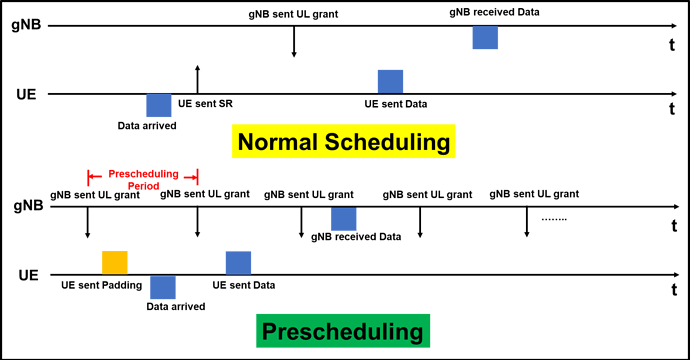-
My friend: Hi Ibrahim, I have a question for you.
- Me: Please, go ahead.
-
My friend: I was wondering what is meant by Prescheduling in 5G?
- Me: Prescheduling is a technique that is used by many vendors to reduce the round-trip time as the gNB will allocate PUSCH resources for UEs in advance without receiving any scheduling requests (SR) or buffer state reports (BSR), so UE can respond very quickly when data transmission starts without any needed signaling for PUSCH allocation which will reduce download time, especially for small downloads. Also, Prescheduling will improve the measured latency for ping tests or what is called speed tests.
-
My friend: Actually, I was thinking to activate it to improve latency, what do you think?
- Me: It’ll improve latency for sure, but take care as the Prescheduling will allocate PUSCH resources for UEs and most of the time these UEs have no data to transmit, so those UEs will send padding in UL which can increase the UL interference and also will lead to higher UL PRB utilization which will affect the UL performance generally. Also, UE battery power consumption will increase as well.
-
My friend: But, how can we reduce the side effect of the Prescheduling?
- Me: The amount of UL interference can be controlled via the proper choice of the Prescheduling parameters, so for example the time between consecutive Prescheduling grants can be increased and also allowing Prescheduling grants not to be sent when available resources are needed by UEs having real traffic. And to avoid unnecessary UE battery consumption, Prescheduling grant is not sent for a UE during poor radio coverage.
-
My friend: Thank you very much. You made it very clear.
- Me: You are most welcome.
Source: Ibrahim Sayed, PMP on LinkedIn: #5g #5gnr #5gtechnology | 29 comments
